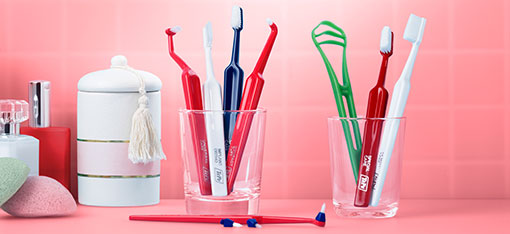What is gum disease?
 Do you think it is normal for your gums to bleed? After you are done brushing your teeth and you spit into the sink, have you noticed any blood? Do you notice bleeding when you clean between your teeth?
Do you think it is normal for your gums to bleed? After you are done brushing your teeth and you spit into the sink, have you noticed any blood? Do you notice bleeding when you clean between your teeth?
Bleeding is not normal. Often people assume they did something wrong, like pressing too hard, poking the gum tissue or using the wrong technique. Although this may occur, many times it is not the reason. Bleeding gums are often related to gum disease, or gingivitis. With good oral hygiene, gingivitis can be prevented and even reversed back to a healthy condition.
What is gingivitis?
Gingivitis = inflammation of the gums. Healthy gums are pink in color and firm in consistency. Whereas, inflamed gums (gingivitis) are red and swollen. If left untreated, gingivitis may progress to periodontitis, or loss of bone that supports the teeth. This will put you at a greater risk for tooth loss.
What causes gingivitis?
A sticky film called dental plaque constantly forms on your teeth. Plaque is especially prevalent between the teeth and along the gum line. When this plaque is not effectively disrupted, your inflammatory response is triggered.
What are some barriers to good oral hygiene?
Not every person is the same, so some people may have more difficulty brushing and cleaning between their teeth than others. Any irregularity that makes tooth cleaning difficult can encourage the build up of plaque, including:
- misaligned teeth
- fixed oral appliances (braces, retainers, etc.)
- overhanging edges on fillings
- poorly contoured restorations
- some partials with clasps
What are some barriers to good oral hygiene?
Cleaning your teeth and gums is essential in keeping the mouth and body healthy. The next time you see bleeding when you are caring for your mouth, don’t ignore it. Instead, investigate further! Be gentle but thorough with your cleaning routine, brushing twice a day and cleaning between your teeth daily. You may need to incorporate an additional tool to effectively clean the areas you see are bleeding. Be sure to see your dental professional and let them know when and where you see signs of inflammation.
Information material
Read more in our patient guide Gum inflammation and periodontitis.











Leave a comment